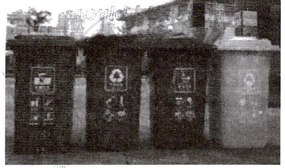Advertisements
Advertisements
Question
How is segregation of the waste helpful?
Solution
The process of separating various waste "materials" is referred to as waste segregation. It refers to the separation of garbage at the place of generation into dry and wet waste or biodegradable and non-biodegradable waste, such as paper, plastic, metal, glass, and organic waste. The following are some applications where waste segregation can be beneficial:
- Reduces the amount of waste sent to landfills: The quantity of waste that ends up in landfills can be decreased by segregating waste items so that recyclables can be kept out of the dump and transported for recycling.
- Helps to conserve resources: Waste segregation lowers the demand for new raw materials, helping save resources. New resource requirements are decreased when waste products are recycled and used to create new items.
- Reduces pollution: By decreasing the quantity of garbage in landfills, waste segregation contributes to pollution reduction. Due to their release of hazardous chemicals, greenhouse gasses, and other pollutants into the atmosphere, landfills are a significant source of pollution.
APPEARS IN
RELATED QUESTIONS
Give two reasons as to why there is a need for safe waste disposal.
How has composting proven to be a great help in managing waste?
What is composting?
Can earthworms help in the composting process?
Name the methods for disposal of solid, liquid and gaseous waste.
Name the four stages of primary treatment of water.
Segregation considered a safe method of waste disposal. Explain.
With reference to the picture below, answer the questions that follow:

- Which waste management method is depicted here?
- State one way in which this method may be implemented at our home.
Give two uses of composting.
Enumerate two advantages of composting as a method of waste disposal.
